by Sam Tackeff | Sep 20, 2011 | Asian, Restaurants

On the way back from our strenuous shopping trip to Ikea, Devon jokingly said he needed $50 dollars worth of Chinese food. Immediately. Preferably two orders of egg rolls. And by jokingly, well, he wasn’t. I’ve been feeding him too many cruciferous vegetables. After five healthy home cooked dinners this week, take-out Chinese food was the appropriate antidote.
The conundrum: where do we get Chinese food in our new city?
Finding good Chinese food is a crucial task for any relocation, and not one I take lightly. When we moved to San Francisco, well-researched Chinese take-out was the first meal we ate – on the floor of our apartment the day we moved in, New Years Eve. My thought process was that if we were going to kill each other building Ikea furniture and unpacking boxes, our last meal had damn well be a good one.
San Francisco has long been a good city for Chinese food, because it became a stopping point for many immigrants from diverse regions of China. In New England, the iterations of Chinese food are less regional, and skew towards a “Chinese-American” that has little to do with native cuisines. And they are often significantly altered for a more… Puritan palate. (For a fascinating book on the topic, I highly recommend Jenny 8. Lee’s book ‘The Fortune Cookie Chronicles’.)
This is not to say the Boston area takes this type of food lightly. I grew up with classic landmarks of Chinese-American food that rivaled anything in the country. The 1200 seat Kowloon Restaurant was opened in the 1950’s, and is still popular to this day. In the late 1980’s, Rick Chang built a 51,000 square foot copy of Beijing’s Imperial Palace, and opened a restaurant that served 5000 meals a day, and even had a separate Kosher catering kitchen for the 40% Jewish clientele. Alas, the restaurant closed a decade later due to bad management, a recession, and tax evasion, among other things. These are the nostalgic spots with the pu-pu platters, tropical drinks with umbrellas and deep fried egg rolls the size of a small burrito. I’ve never been above this type of dining, but they fulfill a different category of culinary desire.
You then have restaurants that serve food with a semblance of what you can actually find in China, which is typically what I’m looking for. Most restaurants have something in between these two. They can still have General Gao’s Chicken on the menu, but as long as they have some decent native-style dishes, I’m a happy camper. (You know, the ones that your Asian grandmother would semi-approve of, or at least recognize the components of the plate. We all know that she can make it better.)
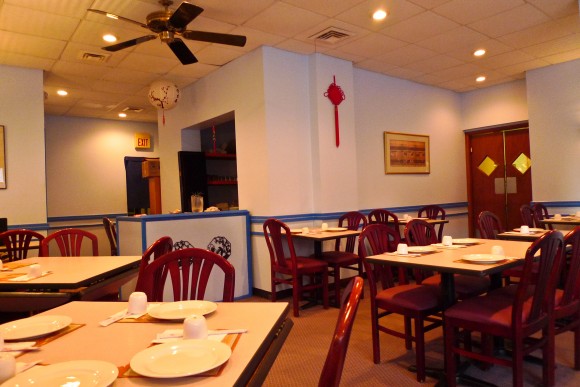
From my preliminary findings, Chung Shin Yuan seemed like a good idea, but after further research, it was noted that the place is really only good for it’s Taiwanese Dim Sum on weekends. (I’ll jump on that soon). Next on my list? Golden Garden, in nearby Belmont.
We were too far for their 3 mile delivery radius, but after reading scores of reviews recommending their dumplings, we drove over to Belmont at 6:30. The restaurant is located on the corner of an unassuming neighborhood block. There were no cars around. Indeed, we were the only ones seated in the restaurant – although many people stopped by to pick up take-out as we ate. This was a relaxing experience after an afternoon with new-college-parents in Ikea. Devon actually got deliberately rammed by a mother with a cart.
We sat right next to the window. Our waiter was new, maybe a college student, but on top of things. Tea arrived immediately, and we were entertained by the “authentic Chinese-American restaurant zodiac placemats”. I had forgotten about these which seemingly were too kitschy for Chinese restaurants in San Francisco, and I feel nostalgic about every time I see them. Devon is a Pig (zodiacally speaking), and I am a Tiger. We don’t technically clash, according to the chart.

I wish we ordered more adventurously, but I tend to be cautious on my first experience. The menu had Szechuan cuisine, so I went that route. (Although, later I found out the chefs are from Dongbei, in Northern China, which would explain the lamb on the menu.)
After some deliberation, we ended up with a cup of egg drop soup for Devon, an order of pork and leek dumplings to share, ma po tofu, and rice noodles with pork.
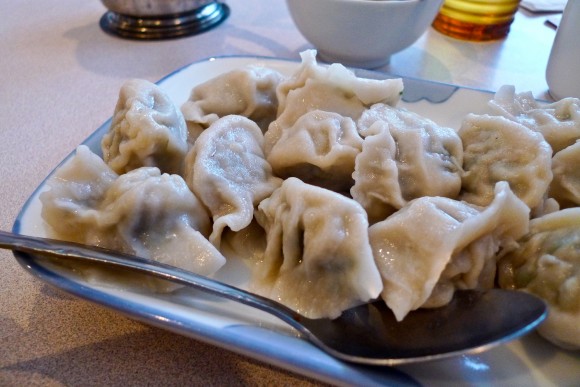
Aside from the egg drop soup, which was slightly bland but serviceable, the food was a success. The dumplings – which you can purchase frozen in bags of 50 – were moist, succulent, and really flavorful. The dumpling wrappers were thin but didn’t break, and they were also boiled, rather than steamed or fried, which really makes a difference in texture.
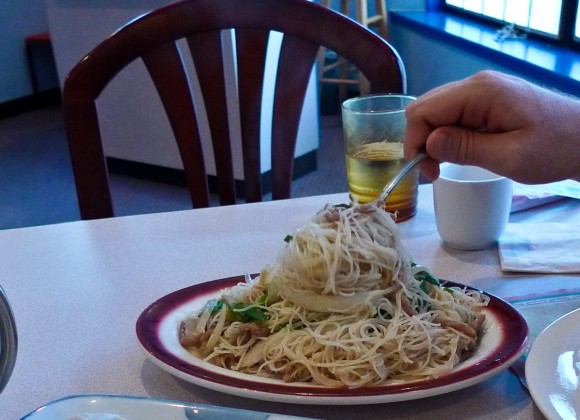
Devon’s noodles, which I had successfully recommended he get rather than sweet and sour pork, came to the table looking unassuming, with small strips of pork and chopped scallions, and was surprisingly well seasoned. The next morning they also made a shockingly good stir fry with cubes of zucchini and bitter greens.
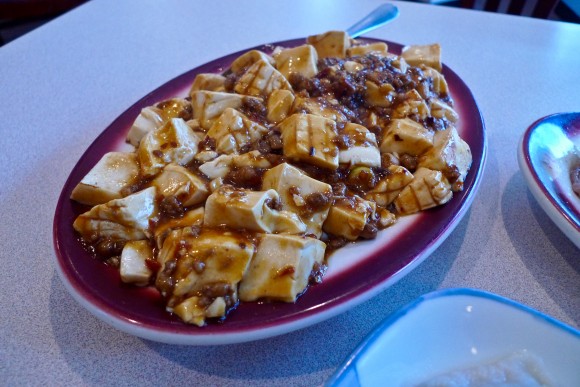
My ma po tofu was soft and jiggly – Devon has “textural issues” with food, and hated it. I found it outstanding. The tofu was soft and fresh, the dish had a great ratio of tofu to meat sauce, and it was spicy enough that I had to order an extra bowl of rice. On my next visit, I plan on ordering more of the house specialties: the cucumber with garlic from the “cold delicacies”, the cumin-scented lamb, and a few of the offal dishes.
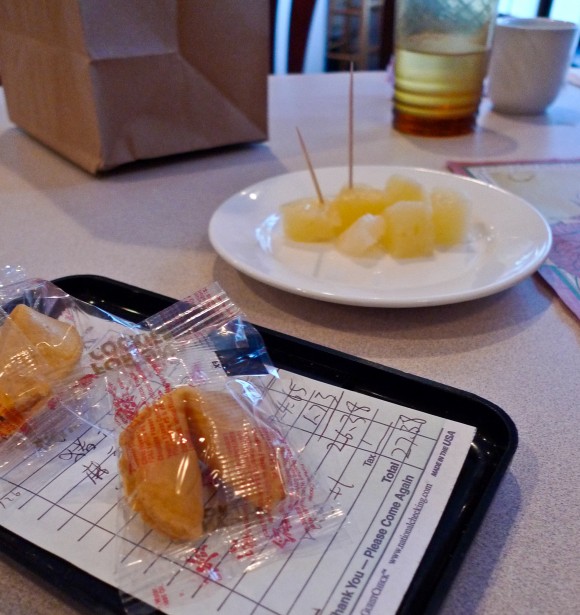
The bill came to $27 dollars and we had plenty of leftovers to take home.
Golden Garden
617-489-4428
63 Concord Ave. Belmont, MA 02478

by Sam Tackeff | Jul 26, 2011 | Asian, Japanese, Restaurants
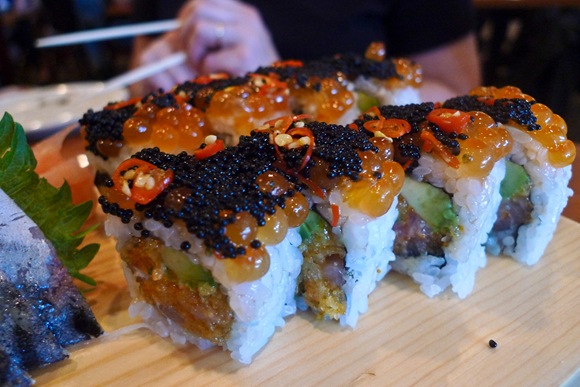
We all have one type of food we crave no matter what our mood is, and for me, that’s Japanese food. New England isn’t exactly the hotbed of Japanese cuisine, but when I was growing up, we happened to have a good little Japanese restaurant in town called Sakura. I regularly would beg for dinner out so I could eat miso soup and California rolls.
Over time I learned there were more exciting options than California rolls, and soon I moved onto Nabeyaki Udon (a rich broth filled with thick, chewy noodles and seafood and vegetables served in a cast iron soup bowl) and Beef Negima, (thinly sliced beef wrapped around scallions). I finally moved onto the Omakase chefs’ favorite sushi – and “please, hold the cooked shrimp”, because I wasn’t interested, thank you.
Sakura closed after I moved to San Francisco. I was sad to hear the news, certainly, but more out of nostalgia than any real loss. It wasn’t the best Japanese food, yet it was the place that opened my heart to an entire regional cuisine. However, I found out another Japanese restaurant opened in its absence when my mother started texting me photos of elaborate sushi rolls. It was called Shio.

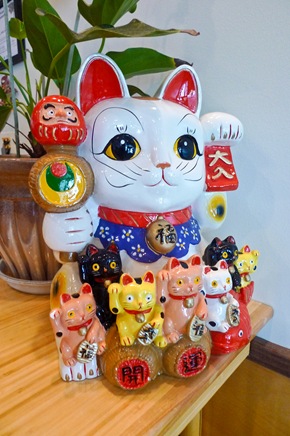
Fast forward to my big return to the Seacoast. I’ve been going on the gastronomic tour these past few weeks, eating at all the old haunts, and making a list of the new ones.
The first time we tried to visit Shio – on a Tuesday – they were closed and I had what we call affectionately in Yiddish, a “kanipshin”, which roughly translates to a big ole’ hissy fit. Two weeks in my hometown away from the big city and I really needed my Japanese food!! When triple digit temperatures actually made the idea of raw fish in a blissfully air conditioned environment a necessity, we came back two days later.
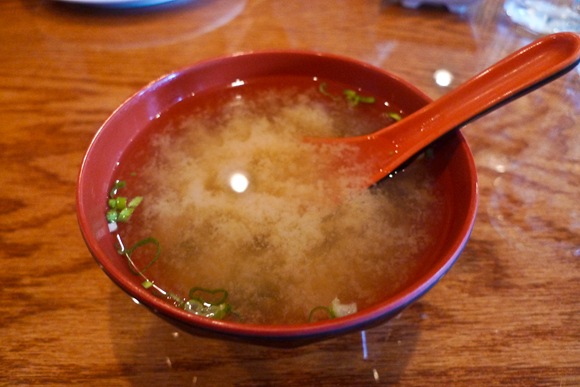
Shio is located in a half empty strip mall in Portsmouth, right on Route 1. This isn’t the type of place you’d be casually charmed to stop in after strolling by, you kind of have to know about it. If you aren’t the type of person immediately put off by neon sushi signs and a “Big Lots” next door, you’ll get rewarded by a pleasant looking restaurant interior. Shio has nice big tables, a sushi bar, and traditional tatami rooms, where you can take off your shoes and sit on cushions. The evening crowd is mainly families, although we saw a few dates, and it can get quite busy.
Let’s face it, it’s not Nobu, but the food is a notch above your New England neighborhood sushi joint. It filled my sushi cravings, used relatively high quality fish that wasn’t bland, and took greater care in plating. They took pride in their food.
Being a tee-totaler of late, we didn’t order any drinks (I know, shame on me), but I did observe a fairly well stocked bar, and some excellently kitschy cocktail umbrellas.
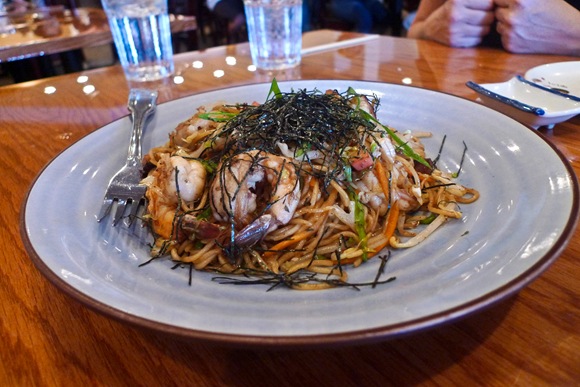 Seafood Yaki Soba with Shrimp and Scallops ($14.00)
Seafood Yaki Soba with Shrimp and Scallops ($14.00)
In addition to sushi, there is a good selection of cooked food made in the kitchen. Having grown up with a sibling that wouldn’t have touched raw fish with a ten foot pole, the relative variety of non-sushi options makes this more family friendly for those who haven’t yet hopped on the bandwagon. Even my grandmother eats sushi, then again, she also has a Mac and goes to Zumba classes.
At dinner, my father ordered the Yaki Soba which was unctuous, not too salty, and generously topped with seafood. The Dumpling Soup was a warming bowl of rich mushroom broth with little meat dumplings, scallions, mushrooms and vegetables (and was much better than the miso soup). Devon’s Chicken Katsu was lightly breaded with a great crunch, and avoided the typical katsu pitfall of being too greasy. It also tasted superb when I ate the leftovers at 11:45 pm, and was awarded my extra stamp of approval.
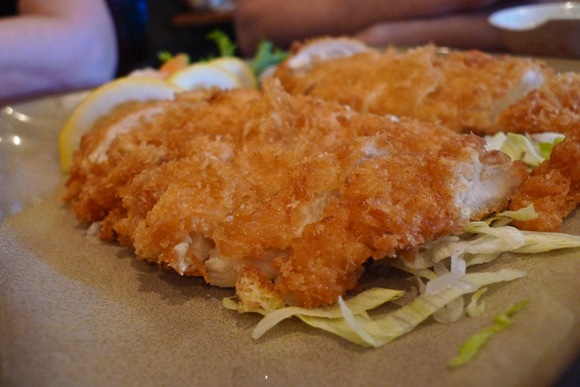 Chicken Katsu ($13) lightly breaded and fried chicken cutlets
Chicken Katsu ($13) lightly breaded and fried chicken cutlets
Although I’m not a “roll person”, the selections at Shio are creative and slightly more exciting than your average selection, using more traditional Japanese condiments such as plum paste, spicy kampyo (squash), or non-traditional additions such as cilantro, mango and fresh chile. My mother had the Rob Roll, which I’m fairly sure was named after someone named Rob, but immediately brought to mind the Urban Dictionary connotation of being very good at something unexpectedly after drinking a lot of booze.
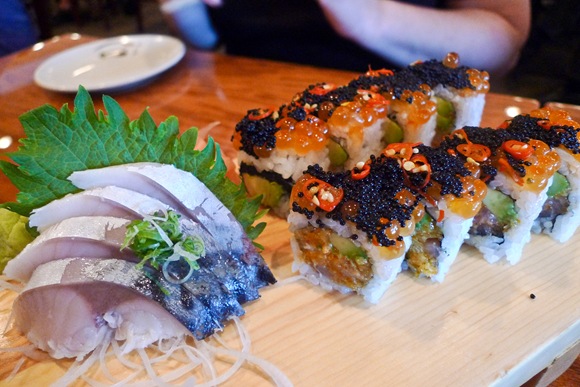 Rob Roll (11.95) Spicy crunchy yellow tail and avocado, topped with salmon roe, caviar, and fresh chili pepper. Side of Saba (Mackerel) sashimi ($4.50).
Rob Roll (11.95) Spicy crunchy yellow tail and avocado, topped with salmon roe, caviar, and fresh chili pepper. Side of Saba (Mackerel) sashimi ($4.50).
I ordered my favorite fish preparation, Chirashi, which is assorted sashimi scattered over a bed of sushi rice. This rendition was quite satisfying, and I found myself enjoying everything except for the imitation crab, which I could generally do without. I particularly enjoyed the variety of tsukemono (pickles), there were three beyond the standard pickled ginger.
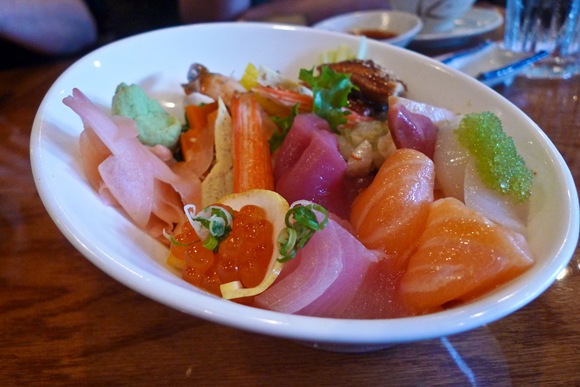 Shio’s Style Chirashi ($20) Assorted raw fish, eel, ikura, caviar and Japanese pickles on seasoned rice.
Shio’s Style Chirashi ($20) Assorted raw fish, eel, ikura, caviar and Japanese pickles on seasoned rice.
In the name of impartial research, Devon and I actually decided to go back to Shio for lunch, as the specials were quite reasonably priced. Interestingly, while the typical Seacoast lunch crowd is made up of women, we were surprised to see a crowd of mostly business men in button downs and slacks – clearly Shio is the place to be for a work lunch. Unfortunately, one of said businessmen spent twenty five minutes prodding his sushi with a chopstick, and left abruptly, but not before rudely telling the staff he was in a hurry, and wasting his entire meal. In his defense, the asshat convention was probably about to start without him.
Lunch specials were served with miso soup and salad, both of which I could have done without. While I generally like carrot ginger dressing, serving it ontop of iceberg lettuce pains me. Devon ordered the sushi platter, which came with five pieces of sushi and a California roll, and I ordered the Sushi and Sashimi combo.
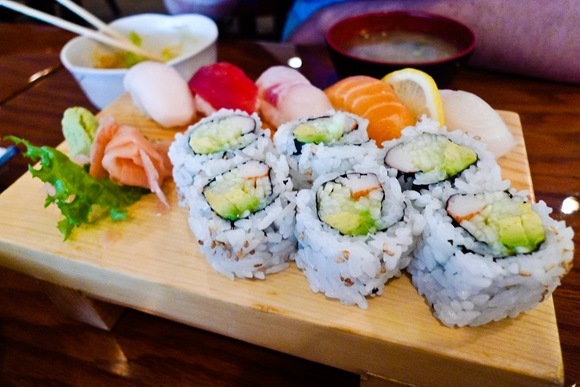 Sushi Platter ($9.50) Five assorted sushi, and a California roll.
Sushi Platter ($9.50) Five assorted sushi, and a California roll.
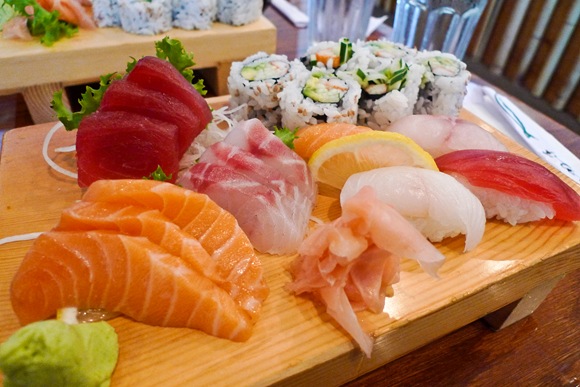 Sushi Sashimi Combo ($12.50) Four sushi, six sashimi, and a California roll.
Sushi Sashimi Combo ($12.50) Four sushi, six sashimi, and a California roll.
Although admittedly not as good as my Chirashi at the previous meal, the sushi was flavorful and lunch was a pretty good deal all around. Overall, two solid meals, a decent price, a lucky cat statue, and we will be back.
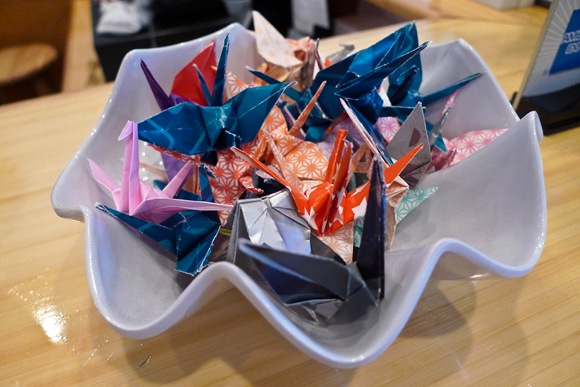
Shio Japanese Restaurant
2454 Lafayette Road
Portsmouth, NH
www.shiorestaurant.com

by Sam Tackeff | Sep 26, 2010 | Asian, Books, Challenge, chicken, Filipino
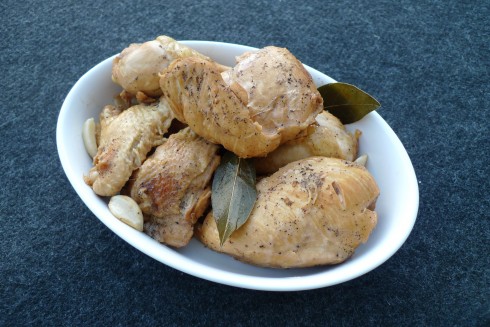
“Filipino food is delicious because it is cooked with love and always served with generosity and hospitality.”
One of the greatest pleasures of working at Omnivore Books is getting to learn about different cultural cuisines.
For the second Foodbuzz Next Food Blog Star assignment, we’ve been tasked to tackle a classic dish from another culture. My immediate thought: Chicken Adobo. Pungent, tasty, and shockingly easy to make, Adobo is a staple of Filipino cuisine.
Filipino food is finally getting its moment in the sun. In Los Angeles, good Filipino restaurants are ubiquitous and the younger generation are clamoring to embrace their cultural food roots. In New York, Amy Besa and Romy Dorotan created a sensation with their restaurant Cendrillon in Manhattan, and more recently moved out to Brooklyn to open the Purple Yam. Here in the Bay Area, Filipino restaurants are on the rise too, and food trucks Adobo Hobo, Hapa SF, and Senor Sisig are producing both contemporary and traditional versions of Filipino classics.
A few months ago, Filipino chef and cookbook author Amy Besa came for a talk at Omnivore Books. To be honest, having grown up in New Hampshire, I had never experienced true (or even bastardized) Filipino cuisine. While Besa spoke, I feverishly took notes.
In addition to being an incredibly warm and friendly woman, Besa is above all an intellectual. “If you are going to write a cookbook,” she elaborated, “I would recommend that you read a lot first. And use food to learn about history. If you try to trace back to where your food came from, you are doing history, and all of a sudden [history] is very exciting!”

(Photo: Allison Michael Orenstein, Time Out NY)
“Filipino food is fundamentally about balance, subtlety, nuance and harmony.”
People tend to itemize Filipino dishes rather than contextualize them. A good way to think about any cultural cuisine is to look at it from a historical perspective: food that is ours, and food that is borrowed. The Philippines experienced a long history of colonialism and occupation, and the food culture was greatly influenced over time. Besa noted that “Filipinos were very good at borrowing foods – the foods that they liked, they indigenized.”
Arab traders had been passing through for eons, and over several hundred years the Philippines were ruled by Spain, and then really ruled by Mexico. You can see this in influences such as Pampanga Bringhe – the Filipino version of Paella (made with sticky rice with coconut, turmeric, and native chicken.) There were very few influences from Mexico, but those include tamales made with rice, and other crossovers such as the use of lye.
Existing in Southeast Asia, they also had many influences from across the region. Immigrants from the Fujian mountains couldn’t use a lot of vegetable oils because they were cost prohibitive to the poor Fujian, so they used pork as fat, which was brought over to the Philippines. Then the Cantonese came with their cultural influences, and as richer communities they brought lighter foods such as stir fries.
In the 50’s, the United States came to occupy the country. Besa noted, regretfully, “Television came on in the 50’s and the big companies started cooking shows to promote their products (and in doing so destroyed generational culinary transfer).The new medium got totally divorced from the values of food you got from your grandmother.”
Besa made it her mission to preserve some of the old ways in her book “Memories of Philippine Kitchens“.
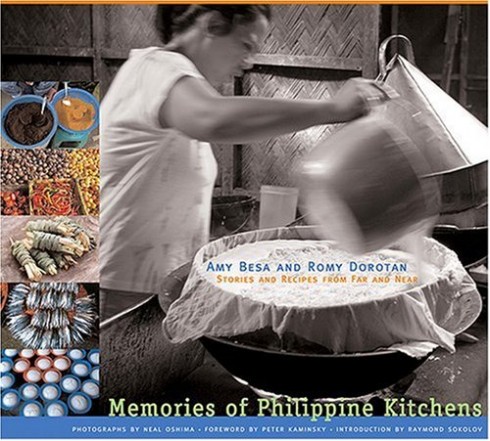
“No matter how rich or poor – Adobo is always on the table, and there are universal rules.”
In many Filipino dishes — including Adobo – a traditional marinade technique, Sinigang – a soup of meat or seafood with tropical fruits, and Kinilaw – a seafood preparation similar to ceviche — the common flavor is sourness. Besa explains this as defining the Filipino palate. The ingredients are the key to the culture, and “Every ingredient you put into your food has got to mean something”. In her restaurant, Besa imports coconut sap vinegar, heirloom rice, and salt from the Philippines. “Everytime I use heirloom rice, I eat up the price – it supports a farmer – that’s the taste of our soil. Of our culture. For me, that’s how I show my pride. It’s not always the best business model, but it is what makes us happy.”
When I set out to choose a recipe for Adobo, I thought about Amy’s rules for creating a recipe and the importance of dealing with ingredients and showing respect for the dish. A good recipe will explain how the dish came about into being, and what you are trying to do with it. You find a lot of truths in classic combinations. You use the very best ingredients.
There are endless combinations of Adobo recipes, but the key components are the sweet, sour, and slightly spicy flavors infused in the meat and vegetables. The technique has been native to the Philippines for centuries, and it was only after the Spaniards came that it was renamed. (Adobo is a Spanish word for the marinades in Spain and Mexico that slightly resembled the Filipino dish.)
For my version of a Filipino Adobo, I used chicken, soy sauce, rice vinegar, coconut milk, bay leaves, black peppers, and chiles. I made some modifications based on what was in my own kitchen (ie: low sodium soy sauce, and lite coconut milk), but the beauty of Adobo is that as long as you have that wonderful sour flavor from the vinegar, and the sweet coconut, it tends to turn out well every time.
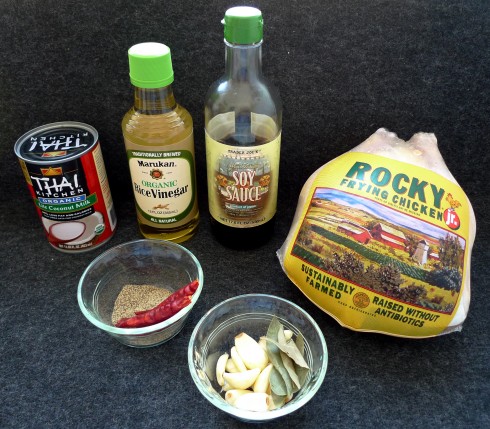
“Cookbooks are a roadmap to our identity, our history, and our roots.”
When Besa spoke about creating the cookbook, I immediately felt moved by her influences and how thoughtful she was about the process.
“I first had to make my cookbook really personal – my love of food comes from my grandmother. It’s a way of preserving memory. Ask a person who is dying about food memories. … Every family should record their treasured recipes…. In generations past, you knew where your food came from. Your Grandmother wouldn’t take shortcuts – it would be the best.
Her first rule of writing cookbooks is to find a muse. For her, it was Doreen Gamboa Fernandez – whose books led Amy to learn more about Filipino foods. She re-read them every year to make her understanding of Filipino food and culture deeper.
It took Amy and Romy four years to put together this book. They traveled back to the Philippines, where she hadn’t been since she had left Manila 30 years before, during a period of political unrest. She traversed the country taping oral histories. What’s your name? How do you do this? “[It is] amazing what you can discover. You become very attuned to the ingredients. The knowledge of the people [like being acutely aware of the stages of a coconut] – just amazing – once you accumulate all that information, you raise the level of information by seeing universalities of all things.”
At one point, an external editor tried to take it over. Besa was adamant: “You can not take out Mahjong. She wanted to cut out the personal. Her notes were kind of racist – too much about grannie, boring.”
For me, “Memories of Philippine Kitchens” has become one of my most treasured cookbooks on my shelf. The material was totally new to me, and I realized that there was so much to discover about my own food and cultural roots — it has inspired me to start writing my own food histories.
“If you really love and respect your culture and food, you would not come up with anything less than the best.”
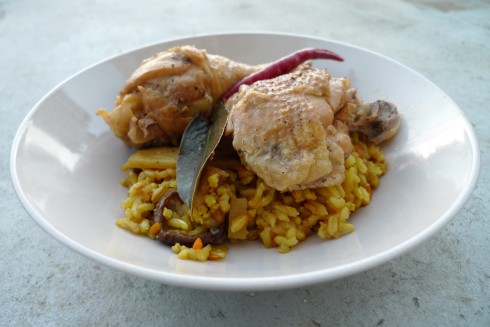
Chicken Adobo
Excerpted from Memories of Philippine Kitchens by Amy Besa and Romy Dorotan (Stewart, Tabori & Chang, 2006).
Serves 4 to 6
This is the recipe we use at the restaurant. The coconut milk helps keep the chicken moist and it makes a rich sauce. We serve this with Mushroom and Bamboo Shoot Rice (recipe follows) and sautéed mustard greens or bok choy. There are countless variations of chicken adobo; Mary “Inday” Gancayco serves a memorable mixture of chicken and pork adobo coated with mashed chicken livers and topped with fried garlic.
Marinade:
1 1/2 cups rice vinegar
1 cup coconut milk
1/4 cup soy sauce
12 garlic cloves, peeled
3 bay leaves
3 whole birdseye chiles
1 1/2 teaspoons freshly ground black pepper
One 3 1/2-pound whole chicken, quartered and cut into pieces
In a large nonreactive bowl or heavy-duty, resealable plastic bag, combine all of the marinade ingredients. Add the chicken pieces and turn to coat in the marinade. Refrigerate for at least 2 hours or overnight.
In a large casserole or Dutch oven, heat the chicken and marinade over high heat. Bring to a boil, then reduce the heat and simmer, stirring occasionally to make sure the chicken is covered in the marinade, until the chicken is cooked through and tender, 20 to 25 minutes.
Transfer the chicken pieces to a large bowl, raise the heat to medium-high, and reduce the sauce until it is the consistency of heavy cream, about 5 minutes. Remove the bay leaves and chiles. Return the chicken to the sauce and cook until just warmed through.
* * *
Inspired by Besa’s suggestions in her book, I served the Adobo with a rice made with Shiitake mushrooms, bamboo shoots, and turmeric. For two people, I sauteed a half an onion (chopped) with a grated carrot, for a few minutes until soft. I then added 3 cloves of garlic (minced), and cooked for another minute. I then added 1/4 pound of shiitake mushroms, and 1/2 cup of chopped bamboo shoots, and 1/4 teaspoon of turmeric. I stirred, and added 1 cup of Koda Farms Multi-grain blend (brown rice, quinoa, etc.) from Rainbow Grocery, and topped with an inch of water. I brought it to a boil and set it to simmer for 45 minutes until cooked.
* * *
F0r more good reading – a few food bloggers whose posts on Filipino food have inspired me:
Arnold @ http://www.inuyaki.com/
Marvin @
MarketMan @ http://www.marketmanila.com/
Connie @ http://homecookingrocks.com/
Erika @ http://ivoryhut.com
by Sam Tackeff | Aug 19, 2010 | Asian, Books, omnivore books, Restaurants
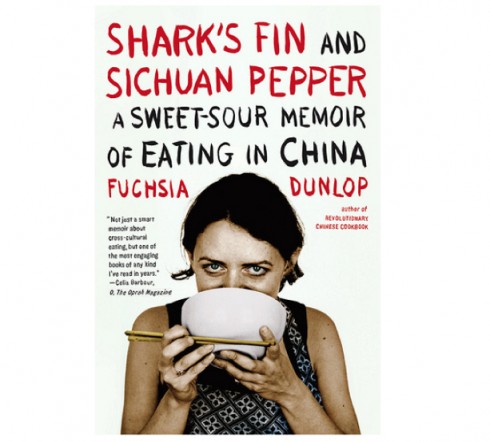
Summer isn’t over yet! (Really, it’s just beginning here in San Francisco). For anyone looking for some good summer food reading – look no further! There is still time to hit the beaches and don your sunhat with a good book! Here is the official Omnivore Books Summer Reading List – for those of you who haven’t seen the newsletter – here is the list (I have in fact, read every single one of these books, and enjoyed them myself):
OMNIVORE’S 2010 BEACH READS
By far, one of my favorite books on this list is Fuchsia Dunlop’s ‘Shark’s Fin and Sichuan Pepper: A Sweet-Sour Memoir of Eating in China‘. Perhaps I’m biased because one of my oldest childhood friends lives in Shanghai, and I feel a kinship to those who write about China, and perhaps my bias extends from my love of Chinese food instilled from my father’s very good Chinese cooking skills (he learned from an Asian grandmother whom he exchanged grocery shopping for her for cooking lessons), but nevertheless there is something visceral that comes up every time I get to recommend this book to someone.
When people come into Omnivore asking for their next good read, I usually direct them towards this book and start waxing poetic and verging on desperation. You MUST read this book. I’m not sure how I would even describe this woman without babbling about how cool she is and how much I admire her tenacity and how much I want to be like her. Here I am doing it again.
Above all, I love reading books by smart, motivated, strong women. There, I said it. Some of my biggest role models are writers such as M.F.K. Fisher, Elizabeth David, and Judith Jones. These women inspire me every day. In brief, Fuchsia Dunlop is certainly one of these women I admire: a witty and persistent Englishwoman, who rather than taking the safe and comfortable route, decided to study abroad in China during her University years. People just didn’t do that in the 90’s. Her brief stint led to a lifelong passion – she went back to live there, and ultimately managed to stumble her way into becoming the first westerner ever to attend the Sichuan Institute of Higher Cuisine.
Ultimately she went on to write two cookbooks, ‘Land of Plenty: A Treasury of Authentic Sichuan Cooking‘ and the ‘Revolutionary Chinese Cookbook: Recipes from Hunan Province‘ which are both excellent resources for Sichuan and Hunanese cooking. Beyond the cookbooks, it was a good thing she went ahead and wrote her memoir. Her voice on the page is clearly one of a woman I’d love to go gallivanting off to the ends of the earth with.
Throughout the book, Dunlop has this wonderful way of describing the tastes and the essence of food, and ‘Shark’s Fin and Sichuan Pepper: A Sweet-Sour Memoir of Eating in China‘ is full of amazing, bizarre, and sometimes even shocking tales. I found myself reading through this book – giggling, getting hungry, and experiencing her remarkable journey as a vicarious travel partner.
The Bottom Line: I highly recommend this book.
And then, of course, once you read it, you too can join the ‘Fuchsia Dunlop Admiration Society’ (OK, so I made that up) and can follow her on twitter! Now if only we could get her to come on vacation and speak at Omnivore! We’ll have a party!
* * *
And now, while we are on the topic, here are a few photos from a dinner I had with fellow food bloggers quite some time ago at Sichuan restaurant Z+Y in San Francisco’s Chinatown. Totally Authentic? Not quite, but it was delicious nonetheless.
I’ve had a soft spot for Sichuan since I was a child, mostly because one of the better Chinese restaurants in our slightly sleepy corner of New Hampshire was called Szechuan Taste. There was one in Portsmouth, and then they opened another one in Exeter conveniently located blocks away from my high school. I can’t really vouch for the authenticity of the food, as they became very Americanized over the years, but I loved the place and have fond memories that guided my pursuit of knowledge into Chinese cooking, so I have to give them credit where credit is due.
At Z+ Y, we ate (somewhat gluttonously, between eight of us): Scallion Pancakes, Spicy Numbing Beef Tendon, Yunnan Style Steamed Chicken Soup in Clay Pot, Peking Duck, Pea Sprouts with Garlic, Special Pork Belly (not on the menu), Chicken with Explosive Chili Peppers and Hot Braised Sea Bass, Cured Beef Wrapped In Scallion Pancake, and Red Bean Buns for dessert.
There is something really reassuring about eating dinner with food bloggers. For one, you don’t have to feel any embarrassment about taking photos of the food, and really the phrase “WAIT – let me just snap a few photos please!” even remains unsaid. Although, to be fair, Devon is very good about waiting patiently for me to take my photos at dinner.
Bloggers in attendance: @cookingwithamy @chefjen, @urbanstomach, @summertomato, @alphaprep (yep that’s me), @divinacucina, @heatherhal and @Jeters.
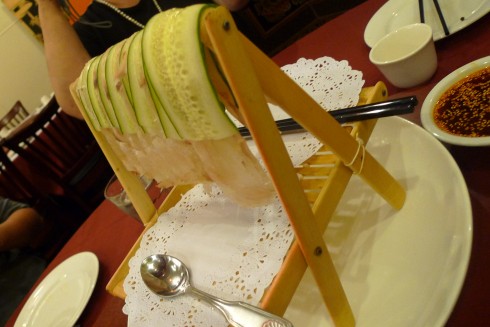
Another thing about eating with food bloggers is that you can order half of the menu and not skip over the bits and pieces of the animal for fear that your dining partners will not be so keen on your choice. And so here, a dish that we all (or mostly all) enjoyed: Tendon. It’s not just for pho! I can’t get over the fact that it looks like I’m being served food on an easel. I really got a kick out of this dish. The beef tendon was shaved thinly, and served with a tingly numbing sauce.
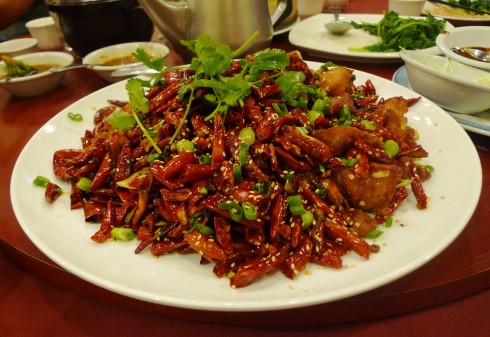
We food bloggers also really appreciate highly photogenic foods, such as this Chicken with Explosive Chili Peppers. Massive piles of fiery peppers in contrasting red and green! I’m fairly sure this had more peppers than would be needed or wanted in the home, but it made for an exciting presentation.
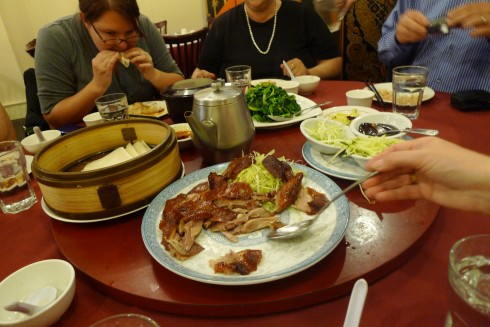
And then there was the duck. Apologies to @jeters for the “in the moment eating shot”, but I had to put this in as it was the only shot of the duck I managed to take. I’ve been a devotee of duck since my childhood where my favorite memories of Chinatown were the ducks hanging in the windows. I’m sure my parents were slightly concerned about my excitement – I was at that point fully aware of the live happy farm duck being the same, in theory, as the dessicated hanging duck in the window – and I still would ask to eat it pleadingly.
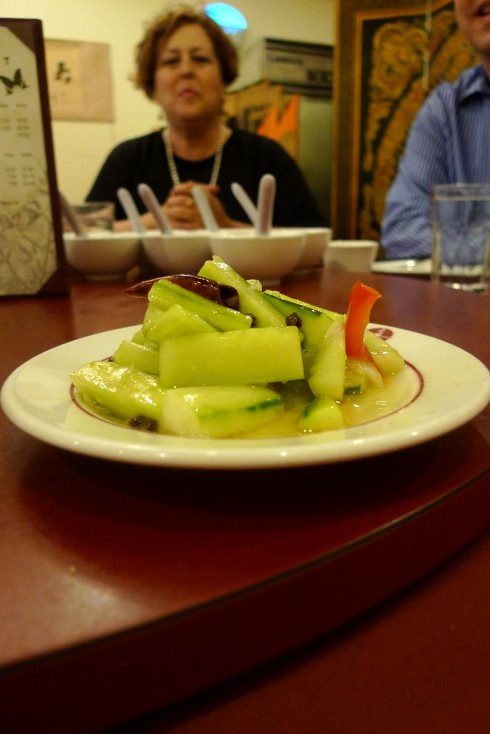
A great part about the food blogging community is that you can eat with people that you greatly respect and admire, and even if their work is heralded across the globe, perhaps in bookstores, or written about in famous magazines, even the best food writers will gather to share a meal – food is something we all have in common. The lovely and talented Divina Cucina in the background (for whom this dinner was in honor of), and quick pickled cucumbers in the foreground.
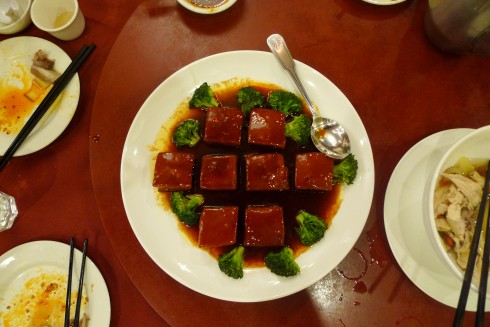
Food bloggers also have gumption and forethought to order in advance, and throw their hands into the air and say feed me the best you can! The Japanese have a word Omakase, or Chef’s Tasting Menu, that is in the spirit that I like to eat – allowing the chef to choose the best, the freshest, the most interesting foods, and as a rule, I always defer to their suggestions for which I’m often highly rewarded. The pork belly – not on the menu, but at the recommendation of the chef was delightful – a current food trend, pork belly has been a delicacy for hundreds, if not thousands? of years, and prepared simply, this was one of the better experiences with pork belly I have had to date.
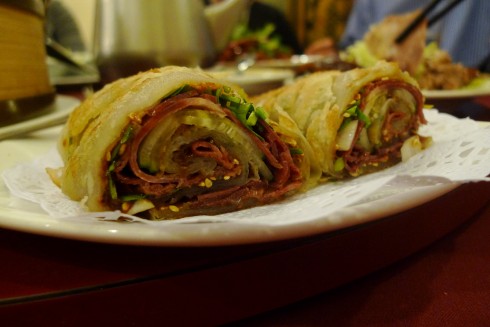
And then there is that moment in many a meal, where sometimes, even seasoned food bloggers are slightly perplexed. In this case, the moment was when we were served the cured meat wrapped in scallion pancake – Chinese-Jewish fusion food? I wasn’t able to grasp the influence, but I liked it!
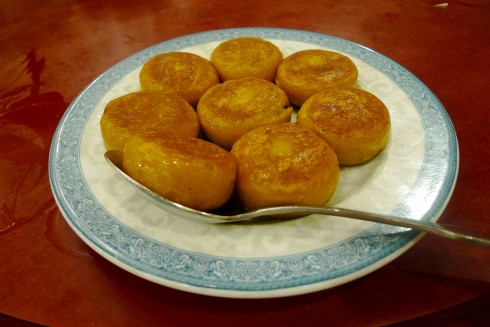
Finally, we ended with red bean buns, and slices of orange, which, although I do have some fabulous photos of friends making awkward orange smiles, I’ve held back at posting them, perhaps though, they’ll serve as future blackmail.
For more perspective, check out Alex’s write-up (same dinner, lens across the table). And for even more convincing, Marcia (The Tablehopper) also had a great writeup of her dinner a month ago.
Z&Y Restaurant, 655 Jackson St, between Grant & Kearny
415-981-8988
Monday-Sunday 11 AM-10 PM
Pre-Ordered Nine Course Meal For Eight: $200 after tax and tip (sans beverage)
by Sam Tackeff | Nov 18, 2009 | Asian, Books, Japanese, Pantry Staples, Quick and Easy, Soups
 This week one of those hokey “name 3 things you like to eat, 3 places you’ve lived, and forward it to everyone!!!” emails circulated throughout my friends, with one noted similarity between all of our responses: It seems that we all have a voracious passion for bacon. Clearly our love for bacon will unite us for all time in friendship, so that’s exciting. And really who can blame us? There is so much you can do with the product – one slice lends entire flavor to soups, served crisply with eggs it is a miracle, even covered in chocolate there is demand.
This week one of those hokey “name 3 things you like to eat, 3 places you’ve lived, and forward it to everyone!!!” emails circulated throughout my friends, with one noted similarity between all of our responses: It seems that we all have a voracious passion for bacon. Clearly our love for bacon will unite us for all time in friendship, so that’s exciting. And really who can blame us? There is so much you can do with the product – one slice lends entire flavor to soups, served crisply with eggs it is a miracle, even covered in chocolate there is demand.
 At the bookstore we have been selling copies of “Zingerman’s Guide to Better Bacon”, a rousing tour of bacon’s history (which for $300 you can get yourself a pigskin bound copy), as well as the Bacon Cookbook, which should have a prominent place in every bacon lover’s kitchen. In an unscientific poll that I’ve conducted, those most likely to buy these books were in a sub-set group of customers of which I include myself: the “JPAB’s”, say it: “Jay-Pab’s” or “Jews passionate about Bacon”. Maybe being deprived of bacon as a child led to my obsession, but really I think it’s actually a mix of deprivation and a greater cultural legacy- we Jews have a penchant for perfect savory brunch food – lox, whitefish, chopped liver, cream cheese, bagels – it’s no wonder that bacon sneaks itself in somehow.
At the bookstore we have been selling copies of “Zingerman’s Guide to Better Bacon”, a rousing tour of bacon’s history (which for $300 you can get yourself a pigskin bound copy), as well as the Bacon Cookbook, which should have a prominent place in every bacon lover’s kitchen. In an unscientific poll that I’ve conducted, those most likely to buy these books were in a sub-set group of customers of which I include myself: the “JPAB’s”, say it: “Jay-Pab’s” or “Jews passionate about Bacon”. Maybe being deprived of bacon as a child led to my obsession, but really I think it’s actually a mix of deprivation and a greater cultural legacy- we Jews have a penchant for perfect savory brunch food – lox, whitefish, chopped liver, cream cheese, bagels – it’s no wonder that bacon sneaks itself in somehow.
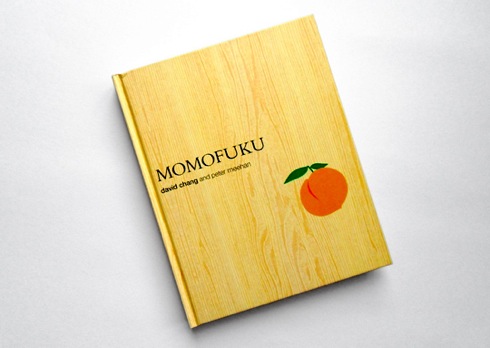 (Photo Helen Rosner/Eat Me Daily)
(Photo Helen Rosner/Eat Me Daily)
I’m always looking for new ways to use bacon, and most recently stumbled across a miracle in my new Momofuku cookbook – Bacon Dashi. Dashi, a traditional japanese stock made of konbu (kelp), and bonito flakes (dried fish, which has been powdered), is a staple broth that can be used in a myriad of ways. In the Momofuku cookbook, (of which a brilliant review can be found at Eat Me Daily), David Chang substitutes more easily findable smoky bacon for bonito, to create of this ever useful base broth. I made a batch last week, and have been using it in everything.
Things to use Momofuku Bacon Dashi for:
:: As the liquid for any soup, stew, grain, rice, or polenta. ::
Or:
1. Bacon Dashi over “stuff”: Slice shiitake mushrooms and green onions (scallions) in a bowl, and some silken tofu if you have it. Ladle hot Bacon Dashi over the contents of the bowl. Sit. Drink with glee. You know, I haven’t tried this, but I bet if you were to crunch up some of those onion strings that people put in green bean casserole in the bowl as well – it would taste good too.
2. Bacon Dashi Miso Soup – use the Bacon Dashi in this perfect and easy recipe for miso soup from Maki of Just Hungry.
3. Quick Bacon and Cabbage soup: Chop one strip of thick cut bacon and cook over medium high heat in a large soup pot. Add in one chopped onion and three minced cloves of garlic, and cook for about 4 or 5 minutes until slightly tender. Add in one chopped carrot, and rip in three leaves of sage. (If you have a potato, cube it into really small pieces, and add it here). Add a tin of cannelini beans, or great northern beans. Cook for about two minutes, and add 6 cups of Bacon Dashi – or a mix of water and dashi if you don’t have enough bacon dashi because you have used most of your double batch in the past few days. Bring to a boil, then turn down the heat, cover, and simmer for 20 minutes. Add in a half head of cabbage, roughly chopped, and 1 tablespoon of white miso paste and simmer for 10-15 more minutes. Season with some pepper, and serve.
*If you don’t have white miso paste, you could just salt at the end, but it wont have that nice unctuousness and depth that the miso adds to the soup. Buy yourself a little tub, and use it!
Momofuku Bacon Dashi
from the Momofuku Cookbook
Makes 2 Quarts
Two 3-by-6-inch pieces konbu (kelp)
8 cups water
1/2 pound smoky bacon, preferably Benton’s
1. Rinse the konbu under running water, then combine it with the water in a medium saucepan. Bring the water to a simmer over medium heat and turn off the stove. Let steep for 10 minutes.
2. Remove the konbu from the pot and add the bacon. Bring to a boil, then turn the heat down so the water simmers gently. Simmer for 30 minutes.
3. Strain the bacon from the dashi, and chill the broth until the fat separates and hardens into a solid cap on top of it. Remove and discard the fat and use the dashi or store it. Bacon dashi will keep, covered, for a few days in the refrigerator.
*Notes: All Asian grocery stores and most health food stores will carry dried konbu (kelp), although increasingly it is found in the Japanese part of the “world” section of the American supermarket. As to the bacon, I used Niman ranch thick cut apple-wood smoked bacon, and it worked out just fine.
*Also, you can half this recipe, or if you are smart, double it.
*Also, you can eat the konbu for snack instead of throwing it out. I wouldn’t advocate the same with the boiled bacon.
Other people using Bacon Dashi in creative ways:
Anticiplate: Southern Style Shrimp ‘n Grits
Inuyaki: Bacon Agedashi Tofu
by Sam Tackeff | Nov 10, 2009 | Asian, Books, Seafood
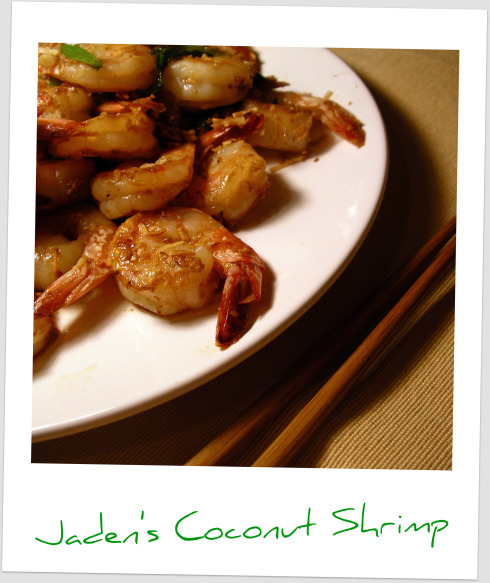
MAKE THIS SHRIMP.
Jaden Hair, the most fabulous lady responsible for the Steamy Kitchen website, visited San Francisco this weekend for her very own book signing with us at Omnivore Books! I’ve been reading Jaden’s blog for several years now, and she is certainly one of the best out there. So, when word was out that she was finally coming out with a cookbook – I was psyched. Let me just say, her book is AWESOME – this shrimp is only one of the reasons!
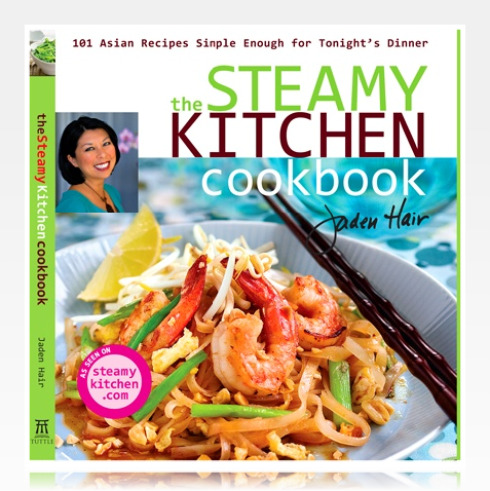
Among the other reasons why this cookbook is awesome, and you should get a copy:
1. It’s pretty! And she took all the photos *herself*. This is phenomenal for any cookbook author to be given such control over the layout of the cookbook. Inspiration for any budding food blogger, or really, just perfect for anyone who wants to be instantly hungry.
2. It features tasty and delicious Asian recipes, easy enough that anyone can make, even if you live hundreds of miles away from an Asian grocery and can only shop at a big-box . And, it’s really well organized – entertaining introduction, informative tools and a really great ingredient section where she goes into some depth about creating an asian-food friendly pantry – and helpful substitutions.
3. My copy is signed… in Pink Sharpie! Let me tell you, Jaden is as wonderful in real life as she comes across on her blog and in her cookbook. What a treat!
Isn’t she great? (Photo of Jaden at Omnivore Books, mid-pose, by Inuyaki)
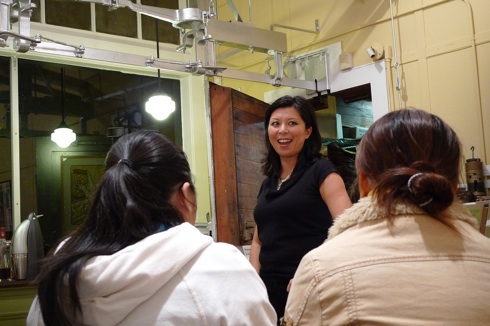
Jaden’s coconut shrimp is delicious. Shrimp, coconut, a little bit of booze – some of my favorite ingredients, period.
Tonight I went into the liquor store and purchased a mini bottle of cognac to use in a recipe, and after making it, let me tell you – I sure as heck wish I had bought the whole bottle so that I can make this one on a regular basis and not have to go back!
Jaden’s Coconut Shrimp (from The Steamy Kitchen Cookbook)
Serves 4 as part of a multi-course meal
(Or two hungry people!)
1/4 cup (20g) unsweetened shredded coconut
1 tablespoon high-heat cooking oil
1 lb (500 g) raw tail-on shrimp, deveined and patted really dry
2 tablespoons butter
4 green onions (scallions), cut into 2-in (5-cm) lengths
1 tablespoon finely minced garlic
3 tablespoons cognac (brandy or rum make good substitutes)
Generous pinch of salt
3/4 teaspoon sugar (omit if you are using sweetened shredded coconut)
1. In a wok or frying pan over medium eat, add the coconut and toast until golden brown. This should only take about 3 to 4 minutes. Take care not to burn the coconut! Once the coconut is toasted, immediately remove to a plate to cool.
2. Wipe the wok or pan dry and set over high heat. When a bead of water instantly sizzles and evaporates upon contact, add the oil and swirl to coat. Add the shrimp to the wok, keeping them in a single layer. Fry for 1 minute, flip and fry an additional minute until almost cooked through. Remove from the wok, keeping as much oil in the wok as possible.
3. Turn the heat to medium, add the butter and , once the butter starts bubbling, add the green onion and garlic. Fry until fragrant, about 30 seconds. Pour in the cognac and add the salt and sugar. Stir and return the shrimp to the wok. Let the whole thing bubble and thicken just a bit – the sauce should lightly coat the shrimp. Remove from the heat, sprinkle in the toasted coconut and toss well.
Wise Note to Self / everyone: I served this on brown rice – which was tasty – but for next time I will split the sauce equally and not hoard it all on my own plate. But it was oh-so-delicious!!!


































 This week one of those hokey “name 3 things you like to eat, 3 places you’ve lived, and forward it to everyone!!!” emails circulated throughout my friends, with one noted similarity between all of our responses: It seems that we all have a voracious passion for bacon. Clearly our love for bacon will unite us for all time in friendship, so that’s exciting. And really who can blame us? There is so much you can do with the product – one slice lends entire flavor to soups, served crisply with eggs it is a miracle, even covered in chocolate there is demand.
This week one of those hokey “name 3 things you like to eat, 3 places you’ve lived, and forward it to everyone!!!” emails circulated throughout my friends, with one noted similarity between all of our responses: It seems that we all have a voracious passion for bacon. Clearly our love for bacon will unite us for all time in friendship, so that’s exciting. And really who can blame us? There is so much you can do with the product – one slice lends entire flavor to soups, served crisply with eggs it is a miracle, even covered in chocolate there is demand. At the bookstore we have been selling copies of “Zingerman’s Guide to Better Bacon”, a rousing tour of bacon’s history (which for $300 you can get yourself a
At the bookstore we have been selling copies of “Zingerman’s Guide to Better Bacon”, a rousing tour of bacon’s history (which for $300 you can get yourself a 



